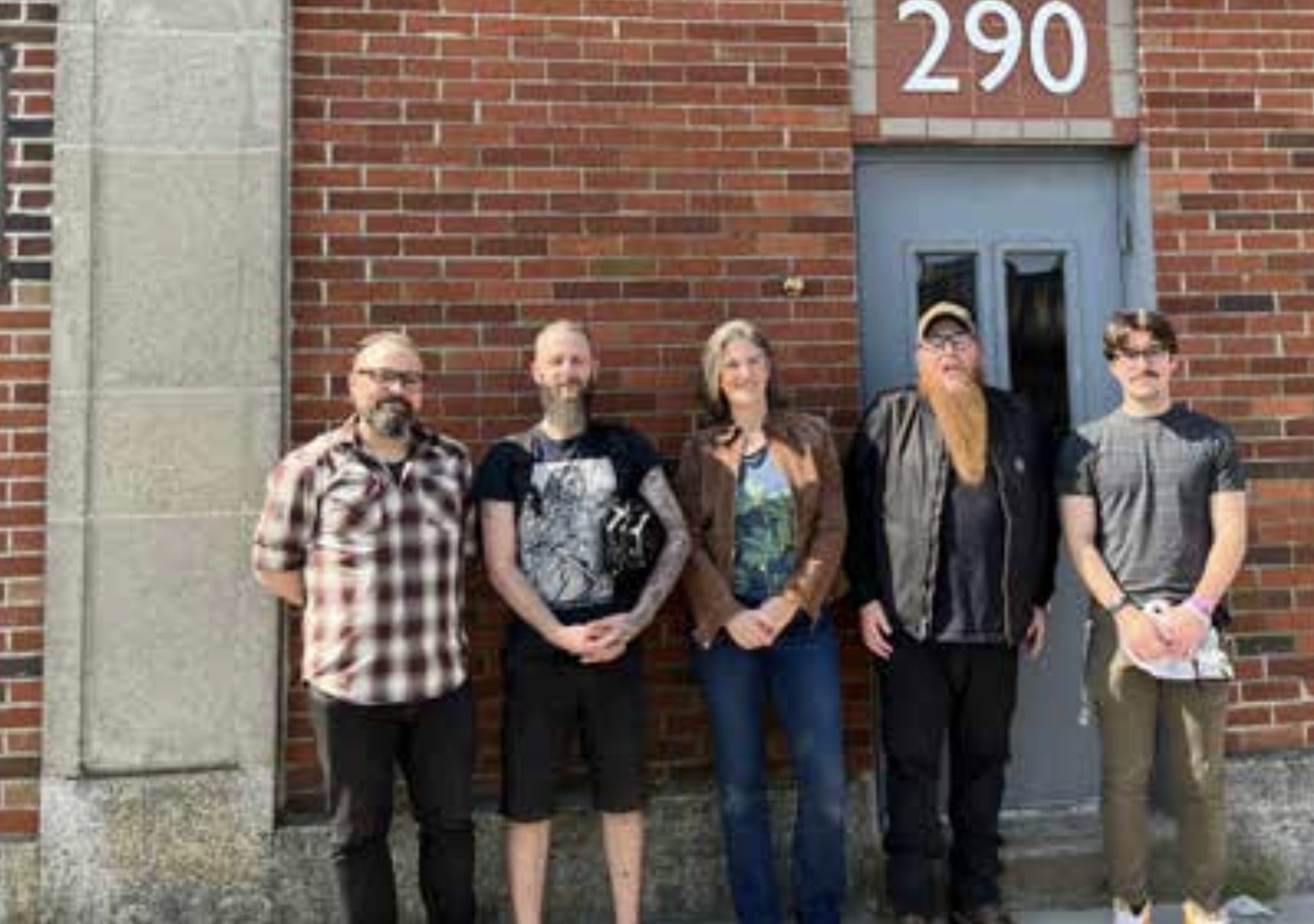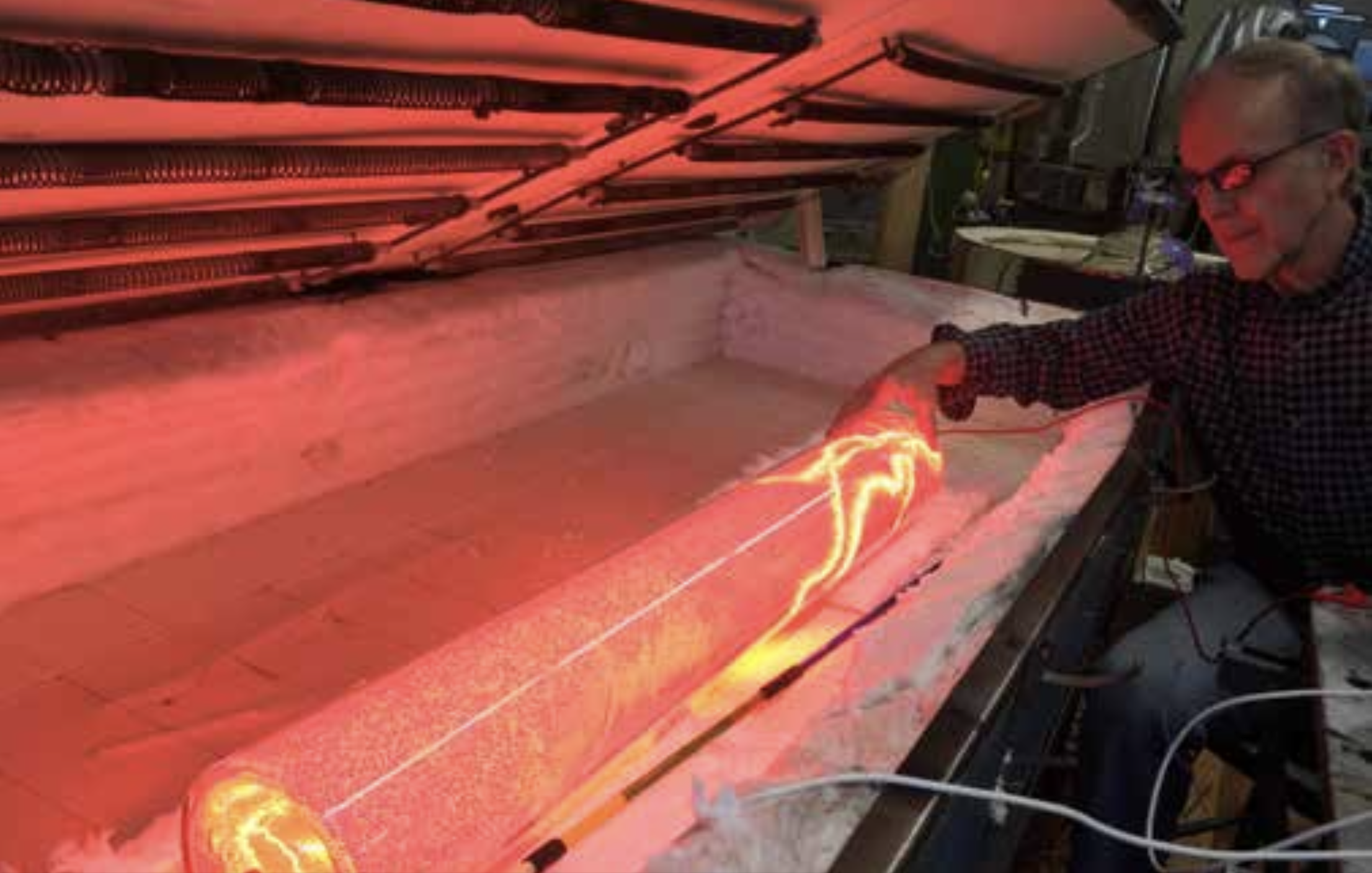Artscope Magazine: The Art of Advocacy
Published in Artscope in the July/August 2023 Issue; By Ami Bennitt
WHAT IT IS, WHO’S DOING IT, ROADBLOCKS & RESOLUTIONS
WHAT IS ARTS ADVOCACY?
Musicians and coalition at 290 North Beacon Street Brighton. Courtesy #ARTSTAYSHERE Coalition.
According to Miriam-Webster, the definition of advocacy is “the act or process of supporting a cause or proposal.” So, if we’re talking about supporting the arts — and in Massachusetts — then there’s a handful of folks pursuing various kinds of arts advocacy. Sometimes the cause is more funding for the arts, other times it’s about fair pay for artists. Now it’s for protecting cultural spaces.
WHO’S DOING WHAT: NATIONALLY, REGIONALLY, LOCALLY
Nationally, Americans for the Arts holds the top arts advocacy position. In Massachusetts, we have MassCreative, whose primary job is to advocate for increased funding for the Massachusetts Cultural Council.
The MCC offers grants, services and professional development resources. It also advocates for the arts, along with other organizations including Mass Humanities, the Arts & Business Council of Greater Boston, ArtsBoston, Massachusetts ArtsLeadersCoalition(MALC),GreaterBostonMusician’sRelief Fund, the National Independent Venues Association (NIVA), and the newly-formed #ARTSTAYSHERE Coalition, whose primary mission is to preserve current cultural spaces and to prevent arts/ music/cultural displacement across Greater Boston.
#ARTSTAYSHERE was born out of the preservation work at Humphreys Street Studios in Dorchester, which is now majority artist-owned/operated, as affordable workspaces in perpetuity. We are a volunteer organization made up of artists, musicians, advocates and administrators, joined together to stop the culture crisis of dozens of cultural spaces lost in our region.
Wayne Strattman, 119 Braintree Street. Photo credit Cary Rappaport.
THE CHALLENGE: BEING AN ARTIST, BECOMING AN ADVOCATE
We’ve heard about right brain, left brain — we know there are many folks “behind the scenes” working as administrators, fundraisers, marketers and technicians, while writers, musicians, actors and visual artists create their work. Usually, artists create and those behind the scenes bring the art to audiences.
Advocacy requires specific skills including organizing, public speaking, writing/messaging, marketing/public relations, government relations, project management, event producing and fundraising. Through our experiences, we’ve seen the strongest arts advocacy is when artists come together and join with behind the scenes folks to create and execute a campaign. Often, advocating for creative space might be the first time some folks have ever advocated. There’s a lot to learn, a lot of strategy involved, and it takes a village. For real.
“One artist made t-shirts, another took care of email/ outreach,” shared Brendan Killian, a Jamaica Plain painter who organized and advocated against displacement.
THE CHALLENGE: ORGANIZING COMMUNITIES
What we’ve found across the board, is that advocacy is not for everyone. Advocacy is usually volunteer work — and most artists (not all) have day jobs to pay the bills and pursue their creative work after hours. Add more unpaid volunteer hours onto that? What if you’re also a parent? There’s just not enough time.
“Artists are often juggling a few jobs and hustling for projects,” said Cristina Todesco, scenic designer at Humphreys Street Studios in Dorchester. “Artists are basically over-extended already. It’s incredibly hard to get people together who don’t normally work together.”
Advocacy is usually group work. Group work is often messy. Messy is not for everyone. When volunteering, we usually see a
variety of people: different ages, from different cultures, with different reasons for volunteering as well as different skill sets. Folks don’t always have similar ideas, or similar hours available to do group work effectively.
“Only about half a dozen artists participated in our campaign,” said Killian. “Some didn’t want to go against the owner, but there was also a fair amount of apathy to contend with.”
At #ARTSTAYSHERE, we’ve worked with eight artist/musician communities at risk over the last three years. In each, only a handful of creatives step up to participate. Advocacy can be done with a handful, but the more, the better. Ultimately, advocacy is standing up for a cause, and getting others to support it. The more that stand up, the more will likely support it, thus affecting change.
According to Wayne Strattman, a glass/light sculptor at 119 Braintree Street (Allston, Massachusetts) being displaced to redevelopment, “getting artists to believe that it’s only through us organizing into one voice that we might get noticed by those that could help — is still challenging. Understanding government processes and trying to participate is very complicated, time consuming and often stacked against developers who have stacks of support from unions, and folks in their pockets.”
WHERE DO THE ARTS FALL AMONG SOCIAL ISSUES
Through doing this work, we’ve been asked if arts should be given the same advocacy attention as more important issues like affordable housing, climate change or gun reform. We always answer: “the arts are not more important than other social issues, but without protections and policies for arts, music and cultural spaces, we know what happens: displacement.” We can choose to advocate for many issues that are important to us, including arts. Housing is a great example of an issue that has policies and protections — including needed subsidies. That came from a social movement and advocacy to create policy and protection.
ARTWORKSHERE, Exhibition 6. Photo by Franklin Marval.
FUNDING FOR ARTS/CULTURAL SPACES
Part of the decades-long struggle with preserving cultural spaces is the prohibitively high cost to purchase in our area. “The arts cannot survive in our region without subsidies,” said JJ Gonson, owner of Once Ballroom in Somerville, displaced during the pandemic. “We need a slew of smaller venues to support our regional musicians. They need places to play, to grow.”
At the #ARTSTAYSHERE Coalition, we often say, “stakeholders have to choose to keep arts here.” That might mean changing zoning in one neighborhood or providing funding to another. We need more people to join and support the movement of preserving the cultural spaces we have and creating more.
“We need more support directly from the government,” Killian said. “We need those in government to do more than expressing concern,” shared Strattman, “a realistic program that could respond in real time.”
REGIONAL ARTS POLICIES AND PROTECTIONS
Part of the advocacy is creating policies and protections for arts, music and cultural spaces, this is both on a state level — through legislation — and on the municipal level — city by city. Currently, each city approves development projects differently; each city has different zoning laws and allowances; some cities have funds set aside for cultural spaces, some do not.
On our website, you can learn more about our cultural space advocacy, the current projects we’re working on, and how to participate. Please consider signing the online petition supporting region-wide protections and policies for cultural spaces at www.artstayshere.org.
Ami Bennitt (co-founder of the #ARTSTAYSHERE Coalition)



